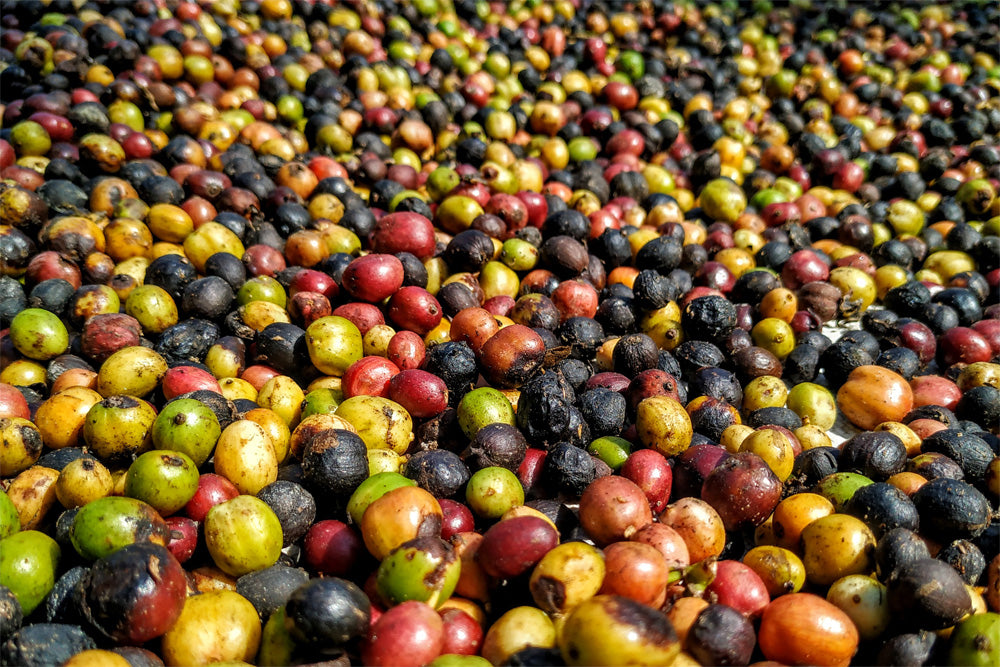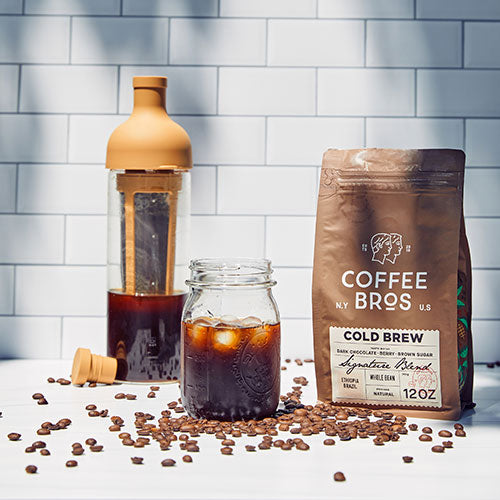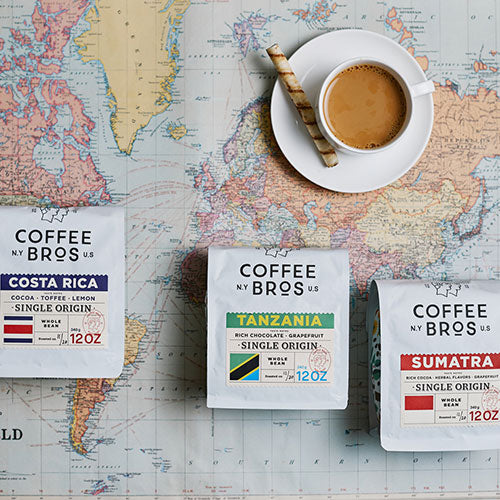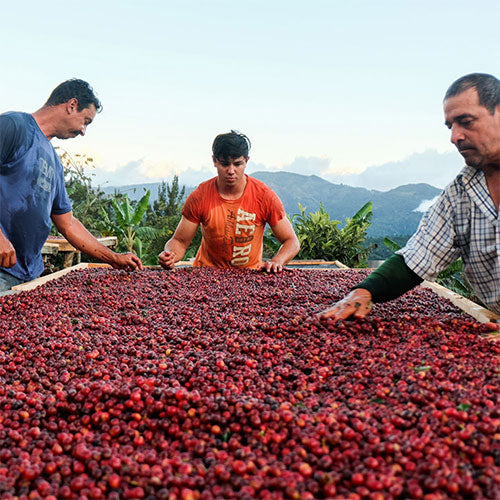November 3rd, 2022
The Ultimate Guide to Single Origin Coffee vs Coffee Blends
Overview
- What is the difference between Single Origin Coffee and Coffee Blends?
- Why are Single Origin Coffees more expensive than coffee blends?
- Are Single Origin Coffees better than Blends
- What is a Micro-lot coffee, and how is that different from a Single Origin
- Why Do Coffee Roasters Blend Coffees
- How to Brew a Single Origin Coffee or Blend
- Why we create blends at Coffee Bros.
Single Origin Coffees vs. Coffee Blends:
We would love to set the record straight between Single Origin Coffees and Coffee Blends.
Single-origin coffee is sourced from a single location (country, region, city). Coffee blends can be made of a combination of origins, different producers or coffees (varietals) from the same origin.
It is often mistaken that “coffee blends” only refer to coffees from multiple origins. While that is true for the most part, we would consider a coffee blend any finished coffee product that combines coffee from several sources, while a Single Origin is purer in a sense, stemming from a specific location, ideally from an individual producer or washing station.
Yes, pretty confusing and which is why at times, it is more simple to say a Single Origin Coffee comes from one location, let’s say Ethiopia, while a blend combines multiple origins, let’s say Brazil and Ethiopia.
Why are Single Origin Coffees more expensive than coffee blends:
Single Origin coffees are not always more expensive than blends, as the cost is usually first derived from the quality of the coffee. A coffee roaster could source a lower quality coffee from a specific origin or producer, slap a Single Origin label on the bag and charge more for the coffee. Well, not quite; if the coffee quality is average, you would expect the roaster to charge an average price for the coffee, regardless of its single-origin or “blended” status. You would also expect a coffee roaster who blends extremely high-quality and traceable coffees to charge an above-average price for their unique offering.
Single-origin high-quality coffee is usually more expensive due to its traceability (a desired attribute by coffee roasters and consumers.) A highly traceable coffee (like down to an individual producer) is usually more consistent, reliable, and often higher scoring than coffees that are not. Furthermore, traceable coffee means that the roaster typically has a stronger relationship with the producer, often paying above market price for the coffee, and supporting the producer to further their goals.
Prices of coffees usually go higher as they get more specific or traceable (like micro-lots or from individual producers.)
Are Single Origin Coffees better than Blends:
Single Origin coffee is not necessarily better than a coffee blend, but often it represents a higher quality and unique product. Still, consumers and roasters seek Single Origin Coffees due to their traceability, consistency, and often more unique flavor profiles than blended coffee. However, coffee roasters make blends to create a unique flavor profile they can call their own, like a house blend or espresso blend.
What makes Single Origin or Single Sourced coffee better than blends is the product's consistency and the coffee roaster's ability to partner with the producer directly to improve upon or iterate on their product.
What is a Micro-lot coffee, and how is that different from a Single Origin:
Micro lots are subsections of coffee farms that may have quality distinctions from the rest of the farm. These rarer lots of coffee are sought after by importers and roasters due to their characteristics and process differentiation from the main lots. Micro lots are priced higher because they are identified as unique from the rest of the farm, and may be of higher quality or a rare varietal such as Gesha. Micro lots are processed separately from the main lots of coffee and often using a different processing method. The Las Lajas farm in Costa Rica has created its own processing method, one called the Alma Negra process, which they then sell as a unique micro-lot from their farm. You can find that coffee offered as a Single Origin Costa Rican coffee in our store.
When comparing a Single Origin to a Micro lot, a micro lot is identified down to a single section within a single producer's farm. You cannot get more specific or traceable when it comes to micro-lot coffees.
Why Do Coffee Roasters Blend Coffees:
Coffee roasters create blends for several reasons:
Blends allow coffee roasters to create something unique; think of their own signature recipe that no one else on the market has.
Coffee Blends allow coffee roasters to offer a consistent product throughout the year (like a House Blend). Blends allow roasters to rotate coffees in and out throughout the year to help with freshness and consistency, while Single-origin coffees are typically offered seasonally.
Finally, coffee blends help roasters manage costs during a constantly changing c-market. Coffee blends can help offset costs by using a slightly lower costs product with a higher-end, higher-scoring coffee.
How to Brew a Single Origin Coffee or Blend:
We don’t see a distinct difference between brewing a single-origin coffee or a blend as it ultimately comes down to:
- How the coffee roaster intended to present the coffee (as an espresso, pour-over, or maybe a versatile roast that carries across brewing methods)
- How do you, the consumer, enjoy drinking their coffee
We do always recommend starting with a pour-over to get a better understanding of the complex taste notes of the coffee and then moving on to your favorite brewing methods like French Press or Espresso.
When brewing a medium to darker roasted coffee for pour-over and if you are looking for a “bigger” and “bolder” taste, shoot for a 1:12 – 1:14 ratio. When looking at the 1:12 -1:14 ratio using grams, this would equate 25 – 28g of coffee to 340g (12 ounces) of water.
For our lighter roasted coffees, we suggest starting at a higher ratio, around 1:14 – 1:16, which helps highlight the brighter notes in the coffee.
Why we create blends at Coffee Bros.:
Our mission is always to chase the bold and unique and to create flavor profiles and textures that wow our customers, and this is what coffee blends can do.
When combining varietals, elevations, processing methods, and coffees from a multitude of origins, you can craft a beverage that is unlike anything else on the market; this is what we chase at Coffee Bros. and why we are as passionate about our blends as we are about our Single Origin coffees.




